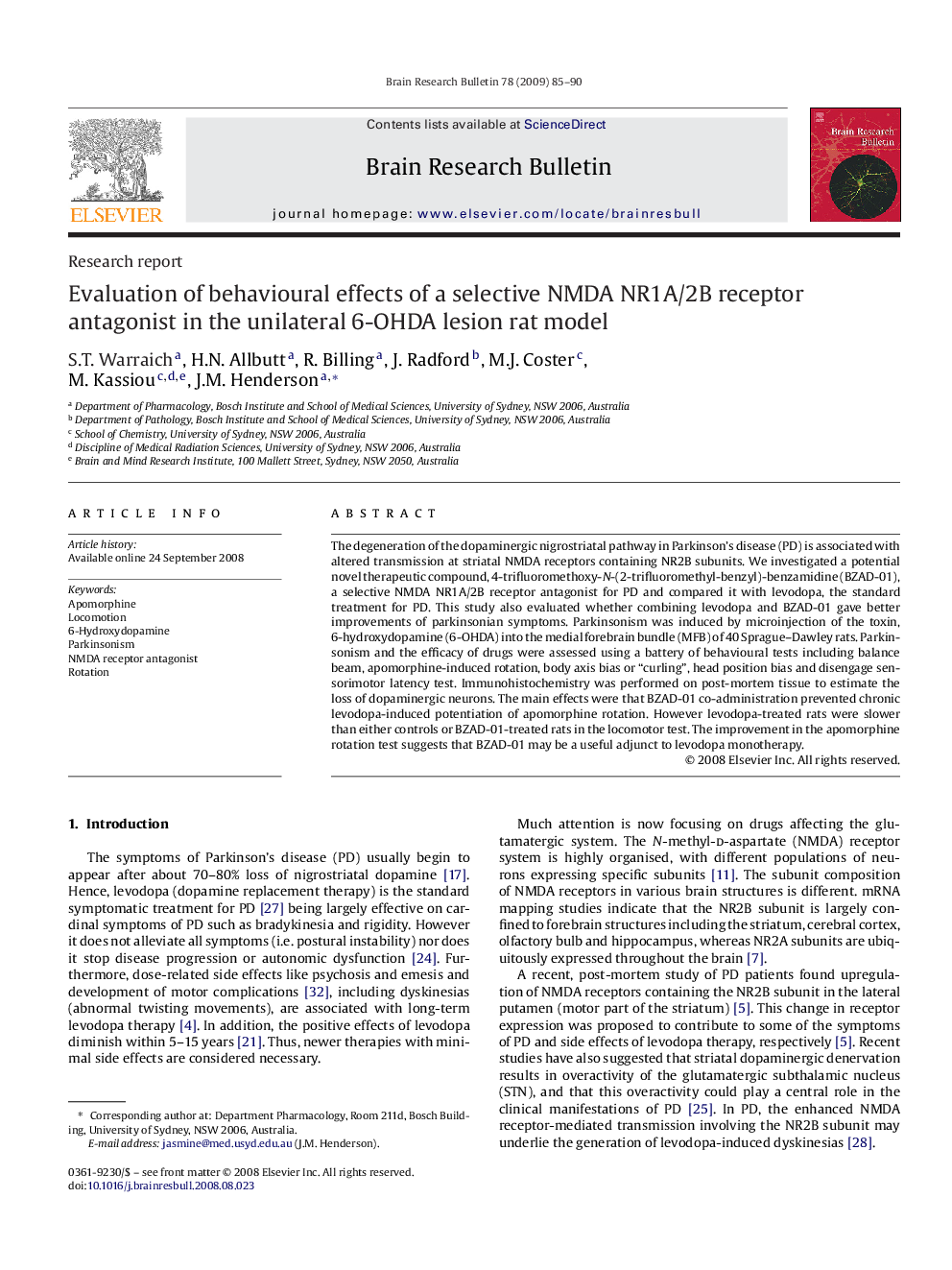| Article ID | Journal | Published Year | Pages | File Type |
|---|---|---|---|---|
| 4319932 | Brain Research Bulletin | 2009 | 6 Pages |
The degeneration of the dopaminergic nigrostriatal pathway in Parkinson's disease (PD) is associated with altered transmission at striatal NMDA receptors containing NR2B subunits. We investigated a potential novel therapeutic compound, 4-trifluoromethoxy-N-(2-trifluoromethyl-benzyl)-benzamidine (BZAD-01), a selective NMDA NR1A/2B receptor antagonist for PD and compared it with levodopa, the standard treatment for PD. This study also evaluated whether combining levodopa and BZAD-01 gave better improvements of parkinsonian symptoms. Parkinsonism was induced by microinjection of the toxin, 6-hydroxydopamine (6-OHDA) into the medial forebrain bundle (MFB) of 40 Sprague–Dawley rats. Parkinsonism and the efficacy of drugs were assessed using a battery of behavioural tests including balance beam, apomorphine-induced rotation, body axis bias or “curling”, head position bias and disengage sensorimotor latency test. Immunohistochemistry was performed on post-mortem tissue to estimate the loss of dopaminergic neurons. The main effects were that BZAD-01 co-administration prevented chronic levodopa-induced potentiation of apomorphine rotation. However levodopa-treated rats were slower than either controls or BZAD-01-treated rats in the locomotor test. The improvement in the apomorphine rotation test suggests that BZAD-01 may be a useful adjunct to levodopa monotherapy.
